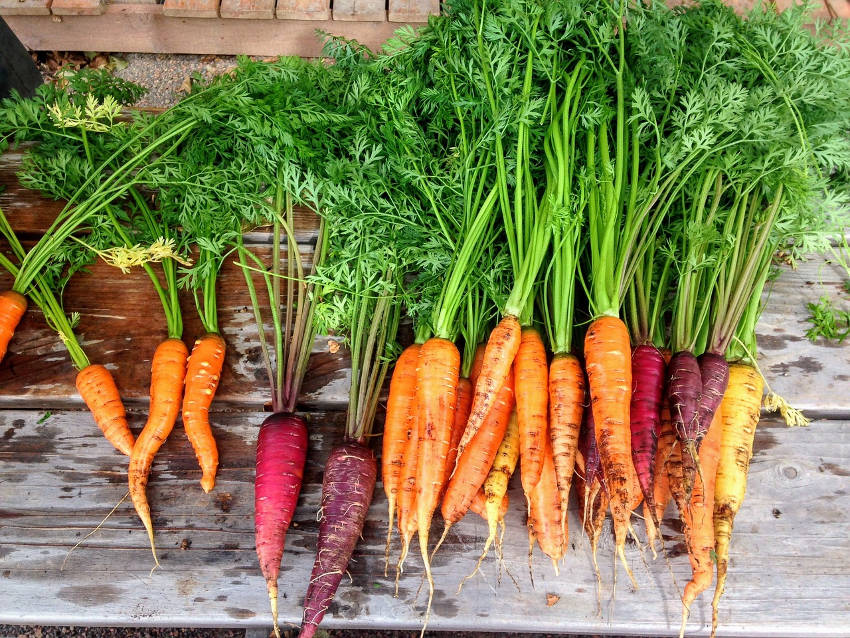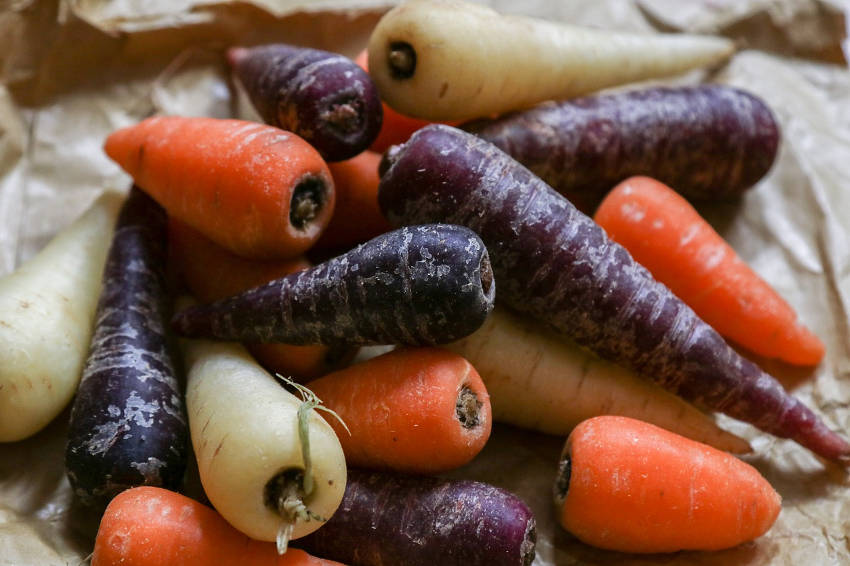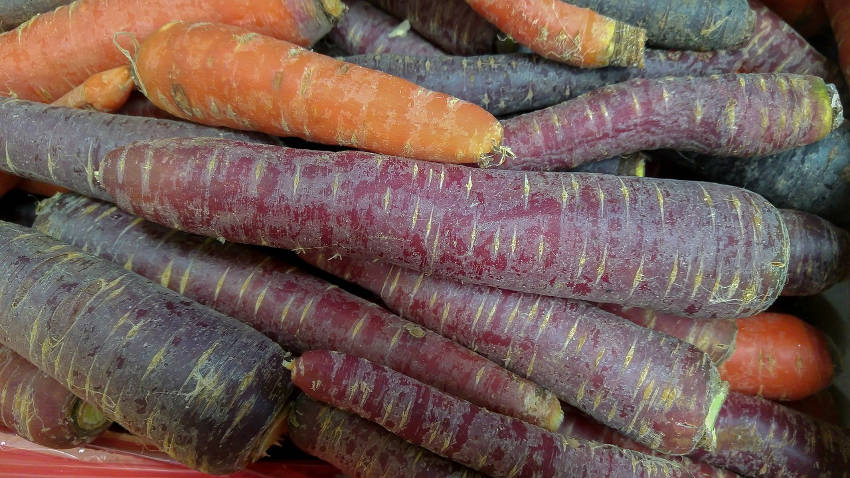Browse any vegetable seed catalogue, and you'll see the varieties on offer tend to fall into two broad categories. Firstly, there are the usual staples which can be grown anywhere from balconies to large vegetable patches, and then there are the more exotic plants which are grown for curiosity or to broaden horizons beyond the supermarket shelves.
However, many crops fall somewhere in between these two camps. One example is the carrot: it doesn't quite have the ubiquity of the tomato, zucchini, or potato, yet it also doesn't really enjoy the wow-factor of a super-hot chilli or the latest wonder berry from the deep rainforest.
But that's a shame, as the carrot is a wonderfully varied and versatile vegetable to both grow and eat, with far more types available than you'd expect from the supermarket offerings. And what's more, it has a much more interesting history than you might at first suspect.
Wild Origins
Like all modern vegetables, the carrot is ultimately descended from a wild ancestor, which may not resemble today's version very much at all. Although carrots are of course classed as root vegetables, their modern appearance tends to disguise this truth: wild carrots really do resemble long, twisted, spindly roots rather than anything remotely veggie-like.
These roots are edible when very young, but quickly become far too woody to be useful. Combine this with an above-ground appearance disturbingly similar to hemlock, and it's perhaps surprising that wild carrots were ever adopted as a foodstuff.
Nonetheless, wild carrot seeds have been found in archaeological sites dating back over 5,000 years and spread across wide temperate zone areas, so they were clearly a popular forage food.
Early Cultivation
The first possible mentions of deliberately cultivated carrots are found in texts from ancient Greece and Rome, although it's not entirely clear whether these were referring to carrots or similar roots such as parsnips.
However, there is firm evidence from the 10th century that true carrots were both grown and stored in the area that is now Iran and Afghanistan. These early carrots were white or purple, and still offered fairly thin nourishment compared to modern roots.
Development of the Modern Carrot
Over the years, selective breeding and better growing expertise gradually led to fatter roots more closely resembling today's examples. Along the way, a random genetic mutation also led to the appearance of a new yellow variety, which quickly became popular thanks to its sweeter flavour.
Selective breeding once again played a part in strengthening this sweetness, and a side-effect was a deepening of the colour into the familiar orange, as the levels of beta carotene were increased.
By the 16th century, examples of familiar orange carrots began to appear in contemporary paintings of market scenes in the Netherlands and Spain.
The Orange Revolution
Given this rich variety of carrot colours in past centuries, why has orange become today's dominant style? It's still possible to find yellow and white varieties, particularly in some parts of central Europe, but the vast majority of carrots grown today are a vibrant orange.
One intriguing explanation for this lies in 17th century European history. William of Orange was a Dutch prince who led his nation to independence from the Spanish empire. His grateful followers took a liking to all things orange as a show of national pride, and so the orange carrot's place on Dutch tables was secured. From there, the superior cultivated varieties spread throughout Europe and then the world.
Whether this story is entirely true or romantically embellished seems a little beside the point. The fact is, orange carrots were larger, sweeter, more densely packed with nutrients, and also kept better in storage. All this led them to becoming the dominant type, providing more nutrition and taste per plant.
However, that didn't mean the extinction of the earlier varieties. Many small-scale farmers continued to grow older types of carrots in colours ranging from familiar orange through to yellow or white, along with more exotic shades including the ancient purple and even black.
Supermarket Carrots
Although orange carrots were selectively bred in part to increase their sweetness, you could be forgiven for doubting this if all you've eaten are supermarket carrots. As is too often the case, when it comes to supermarket sourcing of carrots, speed of growth and length of shelf life are always prioritised over flavour.
Although things are improving, with some grocers selling sweeter, more interesting varieties such as Chantenay or the spherical Nantes, vegetable aficionados know that the path to a truly interesting carrot experience is to grow them yourself.
And of course, that opens up far more possibilities than the watery, slightly woody orange root that's so depressingly widespread.
Heritage Carrots
The last few years have seen a resurgence in interest for older, more unusual types of carrot. It's now possible to buy carrots of all shapes, sizes, and colours if you look a little beyond the usual places. And of course, there's vastly more variety available if you grow them yourself from seed.
However, there's an important point to make: these 'new' carrots are in no way a modern invention or the result of genetic modification gone wild. In most cases they're simply a return to older heritage varieties that have been kept alive by traditional growers and enthusiasts, although there has of course been continued progress through selective breeding along the way.
Why Grow Heritage Carrots?
There are plenty of reasons to take part in this resurrection of vintage carrots, including:
- Coloured carrots add variety to a plate, and also make an interesting novelty for those kids who are reluctant to eat their veggies.
- The various varieties of carrots have different nutritional profiles, helping to balance out a diet.
- With a wider range of carrots to choose from, it's easier to find one that's more ideally suited to your own growing conditions.
- Growing unusual varieties maintains genetic diversity within the carrot family, helping to avoid the issues of disease vulnerability which are threatening bananas worldwide, for example.
- Lastly, to put it simply, unusual carrots are more fun to grow!
The humble carrot may not set the vegetable grower's pulse racing as easily as some of the more exotic crops, but there's every reason to add them to your planting list. They're healthy, easy to grow, and now that there are so many heirloom varieties available, you'll never be bored or spoiled for choice.








